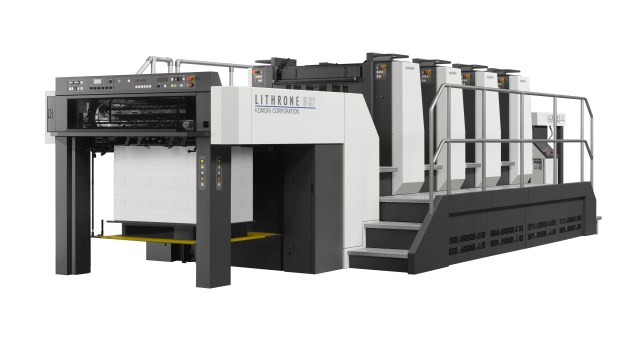
The print industry is hypercompetitive and credit risk can become a bit like a game of Texas Hold’Em poker. The new PPSR is potentially a trump card for printers who want to minimise credit risk by getting into a better position against banks and liquidators. You’ll know what I mean if you’ve been an unsecured creditor during an insolvent administration. Don’t hold your breath waiting for a dividend because the priority and secured creditors will get first bite.
The Personal Property Securities Register (PPSR) is a massive change to the law and also the economy. Launched a year ago, it consolidates more than 70 separate security registers, including Register of Encumbered Vehicles (REVs) and the ASIC register of company charges, into a single online portal, which is accessible at www.ppsr.gov.au.
I’ve been asked by commercial printers, why they should bother using the PPSR. It starts to make a whole lot of sense when you tell printers that it is cheap and easy and it gives them a lot of commercial benefits. It is $3.70 for each registration. An online registration takes two minutes to complete. The main commercial benefit is that the printer becomes a secured creditor against their work product and also intellectual property when it sits in the hands of their client’s liquidator. If the banks register on the PPSR, printers should too.
The PPSR gives creditors the right to register a security interest against ‘personal property’. What is personal property? The question should really be: what isn’t personal property? The answer is real estate. Basically every other form of property you can imagine is defined as ‘personal property’, including goods, inventory, receivables, cash proceeds of sale, shares, intellectual property and cars. This obviously includes printing, which is the work product of commercial printers, as well as related intellectual property.
Commercial printers live in a world of subcontracting with lots of small players and tight margins for big jobs. The key credit risks in commercial contracting for printers are:
• Phoenix activity: businesses that re-birth through different trading companies to the detriment of creditors.
• Business exit: Businesses that shut down without tying up all loose ends.
Short primer about PPSR
The first radical departure from previous approaches is that creditors need to register on the PPSR to get a valid security interest. This generally takes priority against non-registered creditors (ie, title is no longer king).
Before the PPSR came along, in an insolvency situation printers were largely unsecured creditors whose security interests may have extended to retention of title rights over work product (ie, a Romalpa clause). Under the PPSR, when a commercial printer gets a new client, with binding terms and conditions, they can register a Purchase Money Security Interest (PMSI) against the client before they start to produce work. The PMSI is a brand new concept that came into being last year and it is a bit like a mortgage on your work product.
The government policy is to make the PPSR cheap and easy. You can register online for just $3.70 each client. Added benefits with a ‘noticeboard’ registration system are that you can also check the names of all the other commercial printers that your client is trading with, as long as they are also registered. This can help you to assess credit risk for your more important customers and conduct basic competitive intelligence.
Pointers for registering
• Go to www.ppsr.gov.au and follow online portal directions
• Update your customer terms and conditions to include a PMSI clause
• Get a signed credit application if possible or mail out updated terms and conditions to customers
• Don’t tick the PMSI box during registration unless you have updated terms and conditions that provide for a PMSI
The new PPSR online registry is helping commercial printers to go into new client relationships with their eyes open. For commercial printers that are extending credit to clients, it is the new trump card to register on the PPSR.
Commercial printers should start by making sure their terms and conditions contain a PMSI clause and then implement PPSR registration to cover their high-value clients.
Ben Sewell is a solicitor at Sewell & Kettle Lawyers and PPSR enthusiast, www.sklawyers.com.au
Case study: the PPSR and ‘Pete the Printer’
Pete is an experienced printer. Every so often, a client gets shut down and he loses money through the liquidation. Pete doesn’t bother attending creditors meetings any more because he knows secured creditors get whatever is left over. Now Pete has made sure his clients have updated terms and conditions. He has registered them on the PPSR and registered PMSI for all high-value clients.
The commercial benefits of the PPSR to Pete are:
Checking if a potential client is wearing no clothes
Pete can check the PPSR to see if all his new client’s receivables, inventory and plant and equipment are encumbered on the PPSR. What do they actually own if everything is hired or encumbered in some way?
Risk minimised: Phoenix risk and business exit risk
Extending a director’s guarantee to their boat
Most commercial credit applications now include director’s guarantees to give enforcement chances more teeth. A personal guarantee can provide for a security interest over a variety of assets owned by the directors and this needs to be registered on the PPSR.
Risk minimised: Phoenix risk and business exit risk
Snapshot of competitors trading with your client
Pete can check the PPSR to identify which competitors have registered on the PPSR and, therefore, identify which competitors his client may potentially be trading with.
Commercial benefit: Competitive intelligence
Right to proceeds of sale received by a liquidator
A valid PMSI gives Pete a claim over any receivables that relate to his printing product and any payments for those receivables. This is new and it goes beyond previous rights creditors had under retention of title law.
Risk minimised: Phoenix risk and business exit risk
New defence against unfair preference claims
Being required to refund preferential pre-liquidation payments to a liquidator is frustrating. As a secured creditor on the PPSR, Pete can avoid this risk because unfair preference claims only apply to unsecured creditors.
Risk minimised: Phoenix risk and business exit risk
Sale of business risk
One of Pete’s customers sells his business and the new owner trades through a different entity. With a registered PMSI, the incoming buyer will need to pay out all Pete’s debts before completing the sale of the business.
Risk minimised: Business exit risk
Retention of title claims
Whenever a customer is in financial trouble, Pete turns up at their office to pick up his paper or work product. If Pete doesn’t register on the PPSR, he has no rights to retention of title claims in an insolvency scenario. This means Pete needs to register retention of title rights on the PPSR to claim his work product or the liquidator keeps it.
Risk minimised: Phoenix risk and business exit risk
Insurers and buyers may require compliance
It is likely that in the future, credit insurers will require proper compliance with the PPSR as a policy condition. It is likely that if Pete wants to sell his business, the buyer will want to see that he has full compliance with the PPSR.
Comment below to have your say on this story.
If you have a news story or tip-off, get in touch at editorial@sprinter.com.au.
Sign up to the Sprinter newsletter


